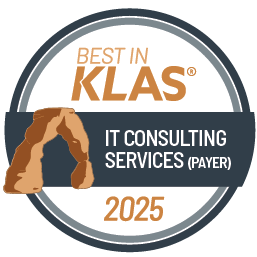Case Study
Lean-Agile Methods Transform Payer IT Operations and Delivery
- Client: Multistate for-profit health plan
- Challenge: Evolve IT services operating model to respond to change faster and enable accelerated growth
Results
- 400% increase in requests fulfilled per week
- 35% reduction in delivery cycle times
- 25% increase in employee engagement
Background and Challenge
A Fortune 50 healthcare payer organization decided to establish a next-generation clinical platform to generate new revenue streams while also reducing operational costs and optimizing the delivery of technology services within the organization. This significant investment involved creating a product development organization and infrastructure to commercialize the new platform.
Unfortunately, the projected increase in demand for implementation services to support these changes was expected to be more than their current organization could handle. The team needed a new way of working that would optimize the operations used to deliver enterprise clinical solutions and services to internal customers.
Solution

The organization’s clinical solutions and technology operational units partnered with Tegria to evolve their operating model using Lean-Agile principles. They also leveraged emerging product management, engineering, organizational planning, and collaboration, as well as change leadership principles and practices to elevate the value, quality, and speed of service delivery to internal and external consumers.
A close partnership gave Tegria experts the opportunity to assist the leadership team in making a paradigm shift toward a more responsive, transparent, and agile service architecture. They used a five-step process:
1. Establish a cross-functional “Lean-Agile Champions Team.”
A working group of influential leaders from HR, Technology, Operations, and other departments came together to help break down silos and tackle organizational complexities that typically inhibit effective execution. They dramatically accelerated the implementation of new methods by ensuring leaders across the organization were informed.
2. Map the value stream to identify bottlenecks and optimize flow via Kanban.
Using Value Stream Mapping, the team discovered and addressed a critical bottleneck: 90% of requests needed to be routed to external teams. They also used Kanban to visualize the value stream, enable performance measurement in real time, and gain visibility into current and upcoming work to manage demand and capacity better.
3. Form cross-functional teams organized around value.
Teams organized by functions, disciplines, or departments were creating barriers to collaboration that slowed delivery. New cross-functional virtual teams aligned to service lines possess all of the knowledge and skills needed to deliver services independently. This change decreased delivery times and increased expertise and productivity.
4. Use cost of delay to prioritize service requests.
An analysis revealed that 20% of service requests were from internal customers, generating 80% of the revenue, but requests were prioritized using an egalitarian “first-in, first-out” technique. Tegria experts recommended an Agile prioritization method that sequences work by business value and duration to maximize revenue potential. Requests that deliver the greatest value to the organization in the shortest time are done first. Using this method, service teams ensured requests were handled in an order that maximized economic benefits.
5. Deliver on cadence and synchronize with cross-domain planning.
Service delivery includes repeatable tasks and requests, but the human element and interactions with internal customers introduce variability. Establishing a service delivery rhythm (cadence) aligned with cross-domain planning provided a predictable framework that yields time to accommodate variations.
Results
This collaboration operationalized fundamentals used by high-performing teams to bring focus, transparency, and unification to employees’ actions, moving the entire payer organization forward with minimal overhead and friction.
Within four months of implementing Lean-Agile principles, customer satisfaction soared, and team members reported being happier and more engaged. Their new way of working enables them to respond to new opportunities and challenges more effectively, deliver differentiated services and products faster than the competition, and ultimately provide greater value to their consumers and communities. Key results included:
- 400% increase in requests fulfilled per week
- 35% reduction in delivery cycle times
- 25% increase in employee engagement